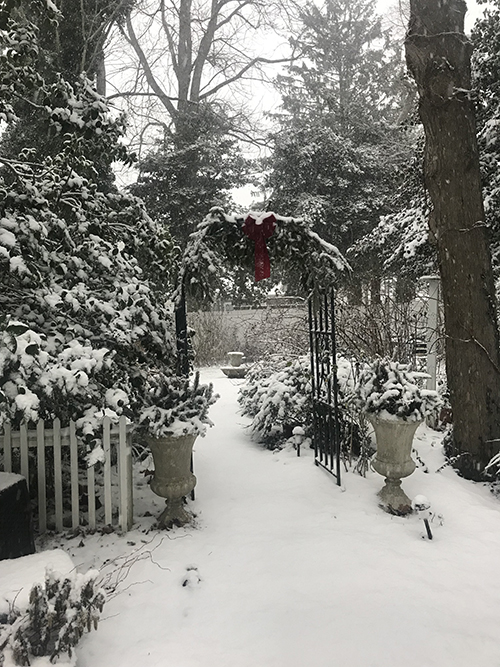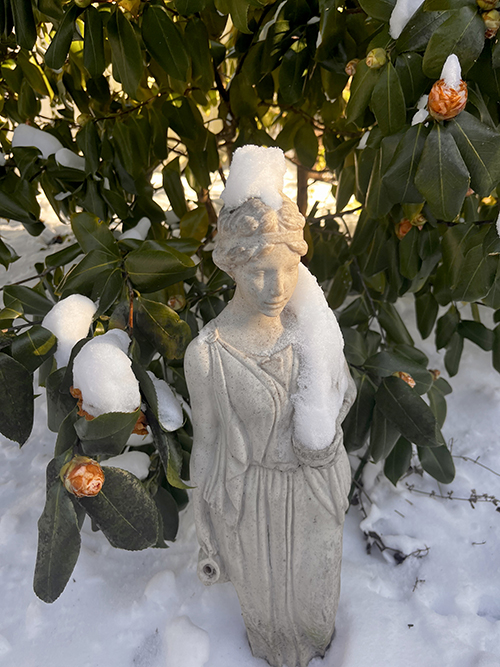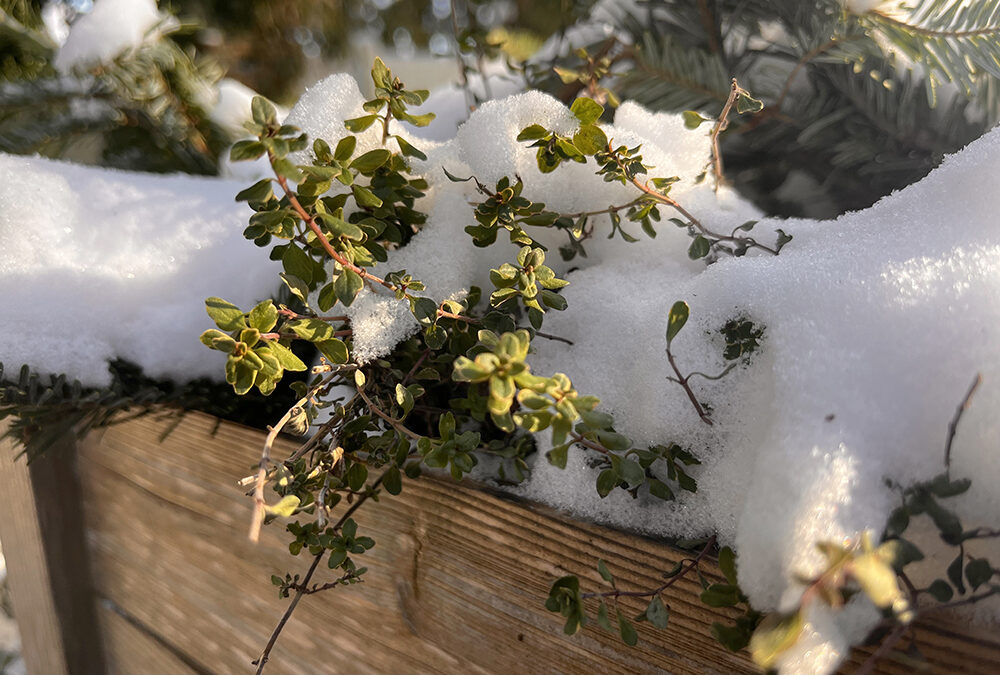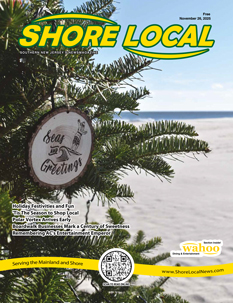Let It Grow
By Tammy Thornton
Over time, seasoned gardeners learn to see the bright side of all different weather conditions. While hot days mean the sunflowers will bloom, rainy days will allow a break from watering the garden, and the roses will thrive. In winter, a gardener can even embrace a snowy day, since they know that falling snow will cover the garden like a warm blanket to insulate plants from the cold. The constant freezing and thawing from winter temperatures will also provide the necessary conditions for the natural stratification of seeds. When seeds are subject to cold and moist conditions, the hard seed coat softens. This process of cold stratification will allow the seed to break dormancy, which is necessary to enable germination when spring arrives.

The snowy garden awaits spring.
Winter sowing takes advantage of these fluctuations in winter temperatures as a way to propagate plants. If you haven’t heard of winter sowing, you may want to try this highly successful method of germinating seeds. Instead of starting seeds indoors or waiting until the last frost to plant seeds outdoors, winter sowers plant seeds at the least intuitive time. In the dead of winter, you can plant seeds outdoors in a vented container (a recycled milk jug is often the receptacle of choice) and subject the seeds to all that winter can throw at them. Rain and snow will help water the seeds through the opening in the jug, and the weather-worn seeds will germinate at just the right time after temperatures begin to warm in spring. As a result, you will have tough little seedlings that do not need to be hardened off — though they might act haughtily towards the wimpy seedlings that were grown indoors, which need to be coddled before living outside.
While winter sowing is especially useful for seeds that have hard outer coverings, this method also works well for perennials and hardy annuals. You should wait until March or April, however, to plant tender annuals, because they would be vulnerable to extremely cold temperatures. Some great candidates for winter sowing are sweet peas, forget-me-nots, poppies, foxgloves, hollyhocks, milkweed, coneflowers, liatris, spinach, broccoli, and lettuces.

Dressed in her snowy scarf, the garden lady watches over camellias in the winter garden.
You can also use a snowstorm to plant poppies – no milk jug required! Simply take a packet of the tiny seeds and sprinkle them directly onto the snow where you would like your poppies to grow. Poppies are one of the types of plants that need cold stratification. As the snow melts, the seeds will plant themselves in the soil and will germinate in the spring.
Lastly, snow can add nutrients to the soil. Sometimes referred to as “poor man’s fertilizer”, snow can release nitrogen into the soil as it melts.
Who knew that a snowy day was setting the scene for a more beautiful garden in the spring? Imagine the world of activity that is happening underground, hidden from sight, and dream about the garden to come.
Tammy Thornton lives with her husband, children, and crazy pets while enjoying a life of gardening, cooking, and going to the beach.
















